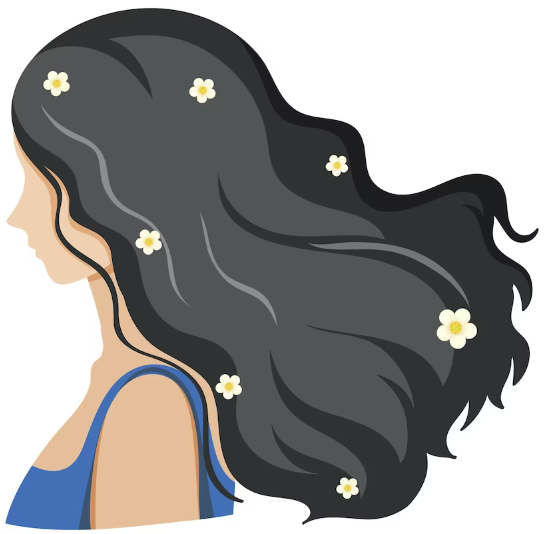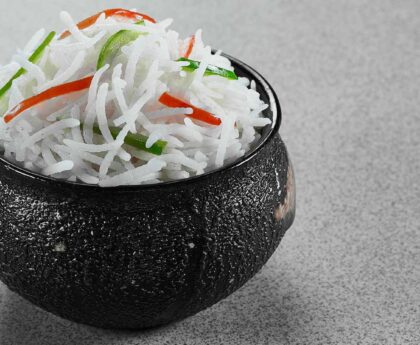Fine hair is defined as having thin or dense single hair strands. When we describe fine hair, we are not referring to the entire quantity of hair on your head, but rather the width of every single hair strand. You can have an infinite number of tiny hairs and still have a whole head of hair! Let’s dispel this misconception right away: Fine hair does not always imply thin hair.
Your hair’s texture, which can be coarse, medium, or fine, is influenced by the length of the hair shaft. Coarse hair has the biggest strand size, followed by medium and fine strands. Fine strands often appear silky, smooth, and even weightless when you touch them.
Texture of fine strands:
When we use the term “fine hair texture,” we mean the silky, delicate feeling of fine strands. Due to the smaller diameter of each hair strand, fine strands frequently feel smoother than coarse hair. Fine strands are often flat because the strand’s little width doesn’t support curls or waves well enough.
Fine or thinning hair?
Understanding the differences between fine strands and thin hair is essential. As was noted before, “hair that is fine” refers to the size of every single hair strand in your head. whereas “thin hair” refers to the overall density of your hair, or how tightly your hair strands are packed on your scalp. Even if you’ve got fine hair, it could be tightly packed, giving the impression that it is thicker.
As you can see, balance and awareness are important. Whether you have fine strands, thin hair, or both, each has its own unique characteristics and care needs. You can select the ideal hair care routine for you by being aware of your hair type.
Healthy Routine for Fine Hair:
Whether you’re attempting to avoid damage or treat dryness, the right hair care routine can restore your delicate strands to their most attractive shape. Here, we’ll go through the practices and products you need to use to keep your fine strands healthy and vibrant.
1. Wash gently
When shampooing sensitive hair, little is more. Overwashing can deplete your hair of its natural oils, making it dry and lifeless. Consider using keratin shampoo, which can assist you in maintaining moisture and keratin in your hair. Shampoo your hair at least twice a week. To keep your hair healthy between washings, apply a dry shampoo.
2. Use gentle conditioners
Fine strands often become weighed down by heavier conditioners. Condition your hair carefully, giving close attention to the ends. This keeps your hair hydrated without making it flat or oily.
3. Drying carefully
Blowing out your hair may provide it volume, but using excessive heat might harm it. If you blow dry your hair until it is 75% dry, it will dry much faster when allowed to air dry. Alternately, don’t blow-dry your hair to build volume until it is 75% dry. It serves as a good idea to apply heat protection whenever you use heated styling tools.
4. Routine Haircuts
It may sound strange, but giving your fine strands a frequent cut may be beneficial. Putting split ends away can make your hair look thicker and healthier.
5. Nighttime care
Buy some silk bedclothes or a hat. Because silk has less friction than other types of fiber, there is less chance that your hair may break or split while you’re sleeping. With this small change, your hair will be smoother when you wake up.
By incorporating these practices into your routine, you may start benefiting from the best that fine strands can provide.
How to prevent thinning of fine strands?
Although they aren’t always unpleasant or more prone to breakage, fine strands can become even drier due to certain practices. Even while there isn’t a perfect way to avoid hair thinning, you can start developing beneficial habits now to stop thinning later in life. Here are a few of the precautions you can take to keep your fine strands looking their best.
1. Choose hair products wisely
Not all hair products are created equal. Some might potentially exacerbate your hair problems. Sulfate-containing shampoos should be avoided since they may irritate your scalp and damage your hair shafts, which may result in thinning. Instead, pick a sulphate-free shampoo because it is gentler on your hair and scalp and a fantastic choice for fine strands.
2. Increase your intake of vitamin supplements
Although maintaining a balanced and nutritious diet is crucial, your hair will occasionally need a little extra support. It is obvious how vitamins fit into this. Use nutritional supplements that provide the vitamins and minerals necessary for hair health and hair development. We suggest consulting a healthcare professional before starting a new supplement regimen.
3. Consuming a nutrient-rich diet
Your diet has a big impact on the health of your hair. Verify the amount of fresh produce, seafood, and animal proteins (such as eggs and vegetables) in it. A balanced diet is essential for maintaining healthy hair since it can strengthen your hair from the inside out.
4. Maintain good scalp health
The health of your scalp has a significant impact on the growth of your hair. Make sure to always comb your hair gently. By enhancing blood circulation to the scalp, this method of detangling encourages the growth of healthy hair.
Finally, maintaining and caring for fine strands might take a little extra attention, but you can maximize the potential of your hair by identifying its unique characteristics and modifying your hair care routine and styling techniques. Pick the finest hair care items for your needs, be gentle with them, and give them good nutrition.



